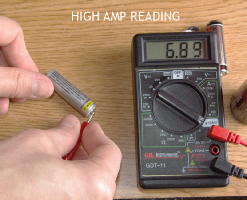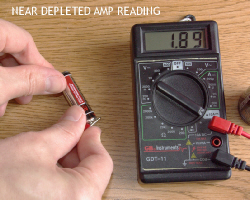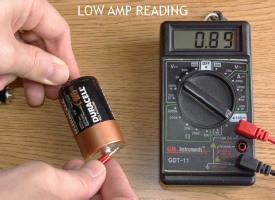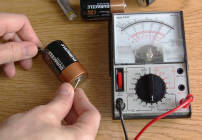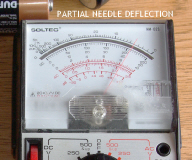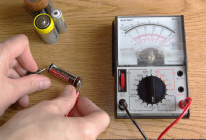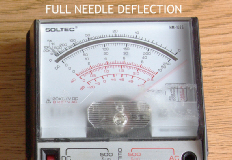
Testing Consumer Batteries
With
Analog or Digital Meters




Testing Batteries with a Digital Multimeter (DMM)
Detail
Detail
Testing Batteries with an Analog Meter
If you have a drawer of consumer batteries and the time has come to find out which ones are good and which ones are bad, this information may be of help.
Consumer alkaline batteries (AAA, AA, C, D) produce a voltage of 1.5 volts. Their voltages are all the same while the larger sizes allow for more storage amps (capacity) which makes them last longer (as long as the drainage load is the same). Rechargeable batteries are a special breed where their voltages register at 1.2 volts, but that doesn’t concern us for this lesson since we’re interested in the milliamps (storage capacity) left in the battery. The smaller batteries tend to hold about 2,300 milliamps and the larger ones go to 10,000 milliamps.
THE DIGITAL METER METHOD
If you have a digital multimeter (DMM) you can set it to the special 10 Amp setting on the dial and connect the positive lead to the specially marked terminal. Note: This special setting is often not fuse protected and the manufacturer warns of using in it for high current applications.
Simply place the probe leads to the appropriate ends of the battery and read the display. Often fully charged batteries have a high number of around 7-9 Amps. Depleted or near depleted batteries only show around 1-3 Amps.
THE ANALOG METER METHOD
If you have an analog meter you can set it to the 500 milliamp setting and see if the battery is doing better than scale deflection will measure.
Often I will only leave the probe on the battery long enough to see the needle fully throw itself to the other side of the dial. A near depleted battery will show the needle coming down from full deflection.

